Oviparous animals reproduce by laying eggs instead of embryonic development occurring inside the mother.
Summary
In oviparous animals, fertilization can take place internally or externally, while embryo development always occurs outside the mother’s body and inside the protective eggshell. The developing embryo gets all its nutrients within the egg from the yolk, which provides protein, vitamins, minerals, and fat. The animal hatches once it is fully developed.
Ovi originates from the Latin word ovum, meaning “egg”. While parous refers to “bringing forth young.” Hence, oviparous animals produce young by laying eggs.
Oviparous animals include amphibians, birds, monotremes (mammals that lay eggs), and most fish, reptiles, and insects.
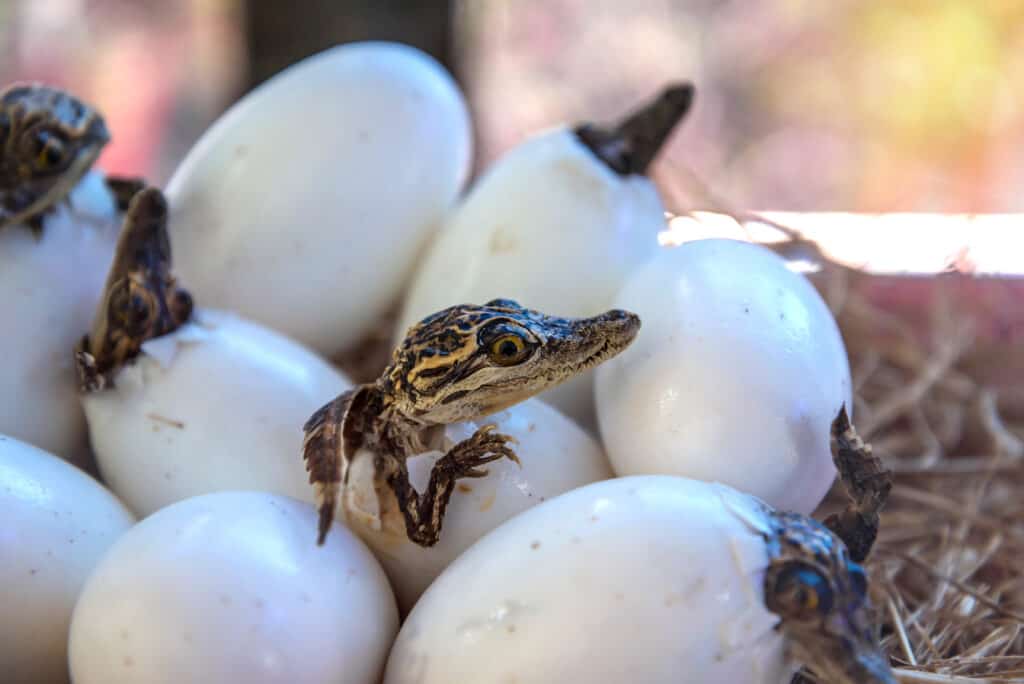
Alligator eggs can survive under a wide variety of conditions, making it relatively easy for alligators to replenish their population.
©iStock.com/Casanowe
How to Pronounce
Oviparous is pronounced [ow·vi·pr·uhs]
Other Ways That Animals Reproduce
Animals can be oviparous, viviparous, or ovoviviparous.
- Viviparous animals (most mammals) are animals that give live birth and whose young develop inside the female’s body.
- Ovoviviparous animals produce eggs, but their eggs develop inside the female’s body and hatch internally. Ovoviparous animals include all rays and some fish, insects, and snakes.
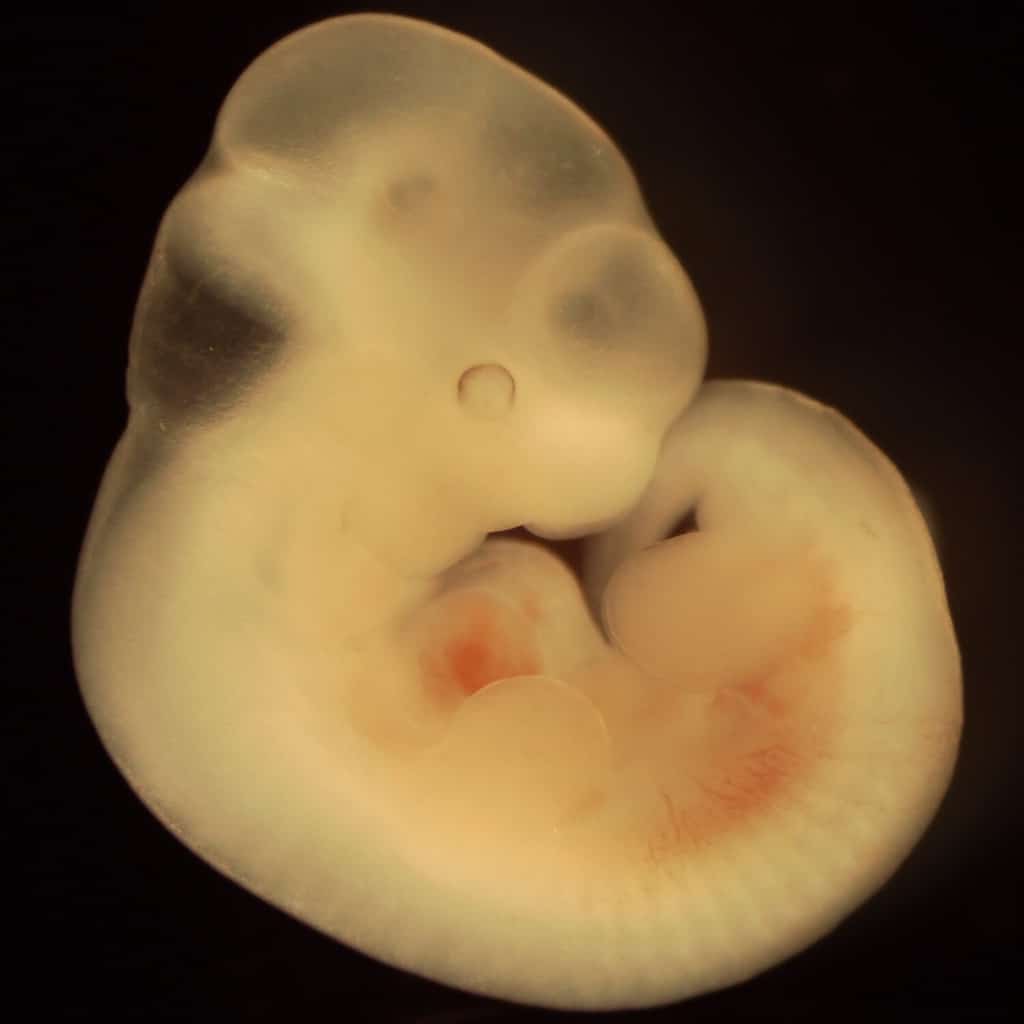
(most mammals) are animals that give live birth and whose young develop inside the female’s body.
©59816/Shutterstock.com
What Are the Advantages of Oviparity?
There are several evolutionary advantages to laying eggs outside the female’s body. These include:
- More offspring. Oviparous animals can lay a large number of eggs at once, increasing the chances of survival. This is especially useful in habitats where there are many predators.
- Less dependent on the mother. Hatchlings can fend for themselves or keep up with their parents in most cases soon after hatching. This is in contrast to mammals that give live births and require a lot of care.
- Energy efficient. Producing eggs requires less energy than carrying and nurturing live offspring. This means that oviparous animals may have more energy for survival activities such as foraging, hunting, and mating.
What Are the Disadvantages of Oviparity?
Despite the advantages, there are some downsides to laying eggs outside the body. These include:
- Vulnerability while in the egg. Developing eggs are vulnerable to hazards such as cold weather and predators.
- Eggs are immobile. Oviparous animals cannot move their eggs to another spot if the mother feels conditions are unsafe.
- Time and energy spent incubating eggs. Some animals, such as birds, must spend a lot of time and energy guarding and incubating their eggs while still needing to gather food.

Birds must spend a lot of time and energy guarding and incubating their eggs.
©iStock.com/Tammi Mild
Types of Oviparous Animals
Egg-laying is the oldest form of reproduction on Earth. Since it’s been around for hundreds of millions of years, many different species have various ways of laying eggs.
Oviparous Birds
Some birds lay multiple fertilized eggs at once, while others lay only one or two. For example, albatrosses only lay one egg at a time. In contrast, ducks have about 12 eggs per clutch.
In most bird species, both parents share the work of nest-building, sitting on eggs, and caring for the young once they’ve hatched. Sandhill cranes are particularly diligent parents. Mother and father cranes work together to build their nests. The female will lay one to three eggs, while both parents take turns incubating the eggs and feeding the babies once they’ve hatched. The young cranes will even stay with their parents for 9 to 10 months during the fall migration, and part of the spring migration.
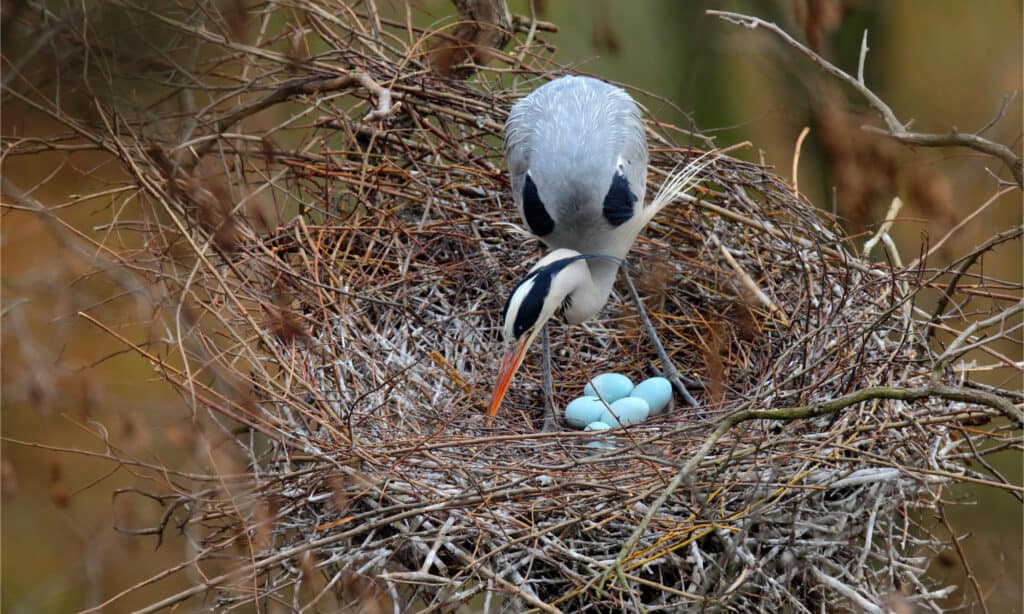
In bird species, both parents share the work of nest-building, sitting on eggs, and caring for the young once they’ve hatched.
©Ondrej Prosicky/Shutterstock.com
Oviparous Fish
Fish lay their eggs in the water. Female fish can lay thousands of small eggs that the male fertilizes externally. Fish lay an abundance of eggs to help with the survival of the species because most of the larvae will be eaten by predators.
Unlike bird parents, the majority of fish don’t care for their young. The newly hatched larvae typically are on their own. However, there are exceptions. Bullhead catfish, for example, not only protect their eggs but stay with their newly hatched offspring. The parents will gather the babies into a ball-shaped herd, being careful to chase any stragglers back into the group to help avoid predators.
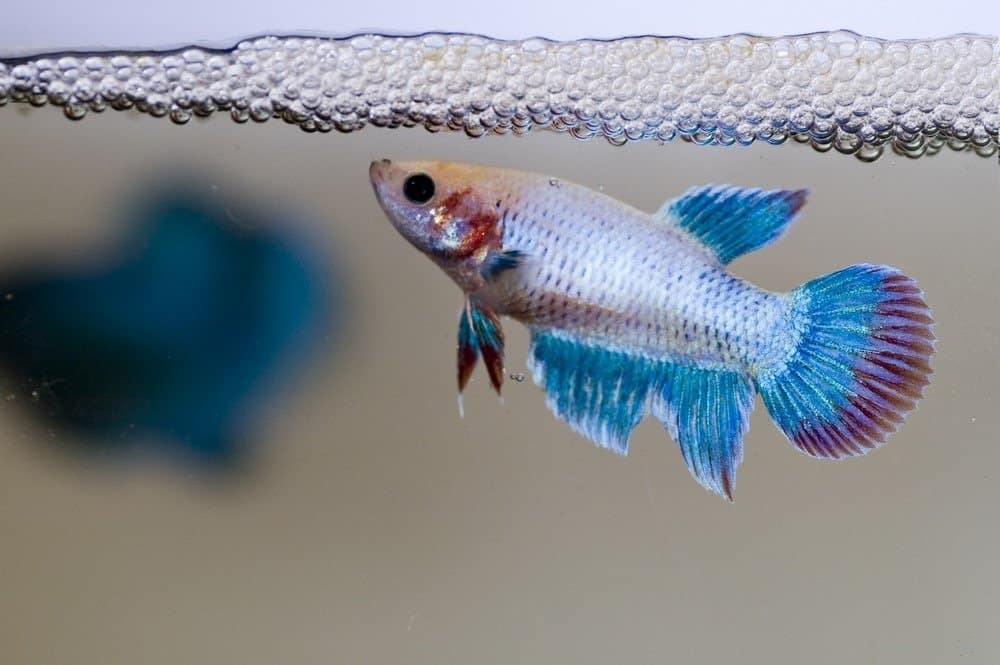
A Siamese female fighting fish guarding her newly laid eggs amongst the bubble nest.
©mnoor/Shutterstock.com
Oviparous Amphibians and Reptiles
Like fish, amphibians and reptiles lay many eggs to help the survival rate due to the high risk of losing eggs to predators.
Amphibian eggs are shell-less, jelly-like, and see-through. They need to remain in the water for the moisture. Frogs, newts, and salamanders live on land but typically lay their eggs in the water. Typically, amphibian hatchlings look nothing like the adults of their species and go through a metamorphosis into adulthood. For example, tadpoles hatch from frog eggs but look nothing like adult frogs until they have lost their tail, grown their legs, and developed lungs for living on land.
Reptile eggs differ from amphibian eggs in that they have a protective outer layer. Reptile eggs aren’t as hard as bird eggs, however, but are more leathery in texture. Most reptiles do not sit on their eggs like birds but bury them in burrows or nests to keep the eggs at a stable temperature.
For example, sea turtle mothers live primarily in the ocean but return to land to lay eggs. The mother will use her back flippers to dig a nest on the sandy beach. She can lay up to 100 eggs. When the babies hatch, they rush toward the sea to avoid predators. Scientists have found that female sea turtles return to lay their eggs on the same beaches where they hatched.
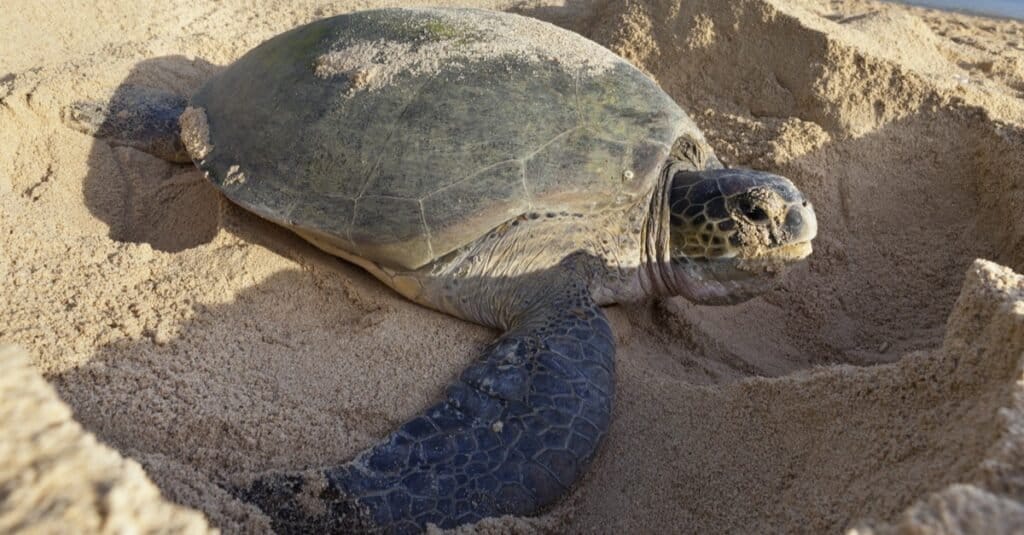
Sea turtle
mothers live primarily in the ocean but return to land to lay eggs.
©David Evison/Shutterstock.com
Oviparous Insects, Arachnids, and Crustaceans
Most arthropods are oviparous. Arthropods include invertebrate animals with an exoskeleton, such as arachnids, crustaceans, and insects. Beetles, centipedes, crabs, butterflies, and spiders are just some of the arthropods that make up this group.
There are exceptions to oviparous arachnids. A small number of arthropod species, such as tsetse flies and aphids, are not oviparous but have live births. For example, aphid and tsetse fly larvae still develop in eggs, but they are ovoviviparous, meaning the mother keeps the egg inside her body and gives birth to her young.
Some arthropods lay fertilized eggs, while others lay unfertilized eggs that are fertilized by the father externally. Arthropods can lay hundreds of eggs at a time, which helps the survival of the species due to the high rate of predation on the hatchlings. The blue crab mother can lay up to eight million eggs.
In arthropods, the eggs are usually laid in a nest or water for protection, but in most species, the parents do not stick around to care for their young. The wolf spider is an exception to this rule. Wolf spider mothers weave silk sacs to carry their eggs with them. When they are ready to hatch, the mother spider will tear open the sac to help the babies hatch. The tiny spiders scurry onto their mother’s back and ride around with her for a few weeks until they are big enough to survive on their own.
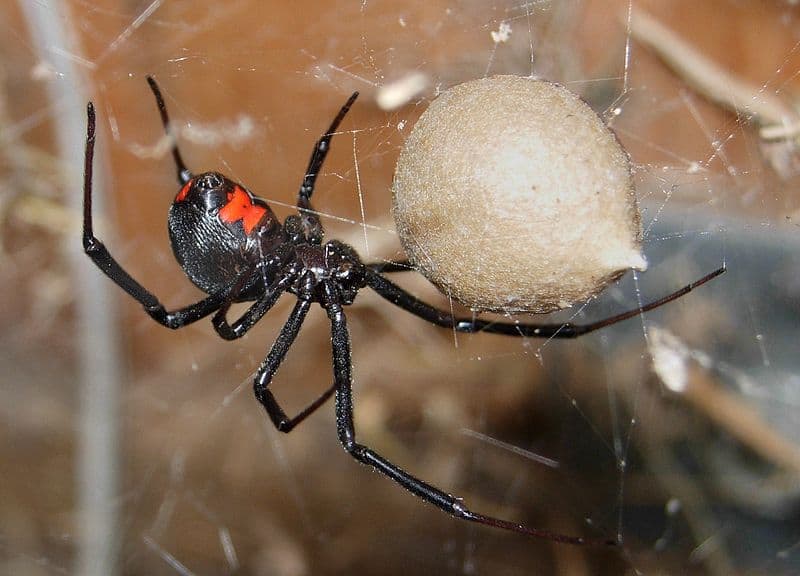
A female spider defending her eggs is very likely to bite.
©Chuck Evans(mcevan)”./ CC BY 2.5, via Wikimedia Commons – License
Oviparous Mammals
Almost all mammals are viviparous. However, the first prehistoric mammals did not give live birth but laid eggs. Only a small number of egg-laying animals still exist: the duck-billed platypus and the spiny anteater (also called the echidna.)
These mammals are known as monotremes (egg-laying mammals) and they are only found in Australia, New Guinea, and Tasmania. Unlike other oviparous animals, monotremes produce milk for their young like all mammals. They don’t have nipples but secrete milk from glands on their skin. Typically they have small clutches of one or two fertilized eggs, and the mothers care for their young in a pouch or burrow.
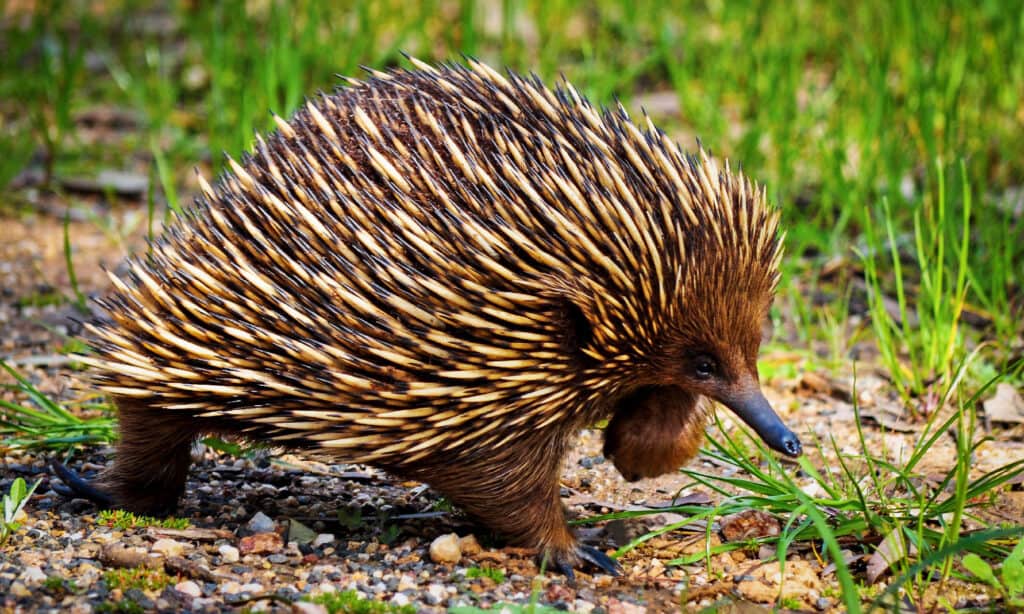
The echidna is one of the very few egg-laying mammals.
©Vicki Cain/Shutterstock.com
What Is the Largest Oviparous Animal in the World?
The ostrich is the largest oviparous animal on Earth. The mother ostrich lays 7 to 10 eggs at a time in a communal nest, which can have up to 60 eggs in it. Ostrich eggs are the largest of any bird, weighing in at around five pounds. They are made tough so that they can take the weight of the parent sitting and nesting on top of the egg.

The
ostrich
is the largest oviparous animal on Earth.
©fullempty/Shutterstock.com




